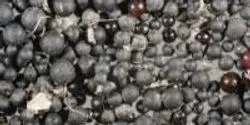News

Astronomers using data from three of NASA's space telescopes — Hubble, Spitzer, and Kepler — have discovered clear skies and steamy water vapor on a gaseous planet outside our solar system. The planet is about the size of Neptune, making it the smallest for which molecules of any kind have been detected.

A Virginia Tech geobiologist with collaborators from the Chinese Academy of Sciences have found evidence in the fossil record that complex multicellularity appeared in living things about 600 million years ago – nearly 60 million years before skeletal animals appeared during a huge growth spurt of new life on Earth known as the Cambrian Explosion.

Up to half of the water on Earth is likely older than the solar system itself, University of Michigan astronomers theorize.

The American Chemical Society (ACS) announced today that internationally renowned chemist Carolyn Bertozzi, Ph.D., will take the helm as editor-in-chief of its first fully open access journal, ACS Central Science, which is set to launch in early 2015. Currently a Howard Hughes Medical Institute (HHMI) investigator at the University of California at Berkeley, Bertozzi is widely recognized as one of the most accomplished and respected chemists of her generation.

Researchers at Sandia National Laboratories’ Z machine have produced a significant output of fusion neutrons, using a method fully functioning for only little more than a year.
















